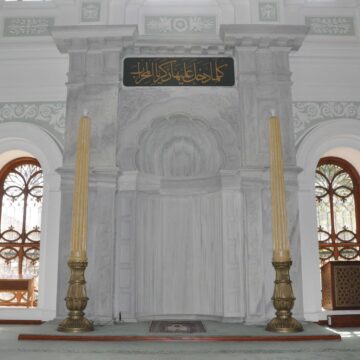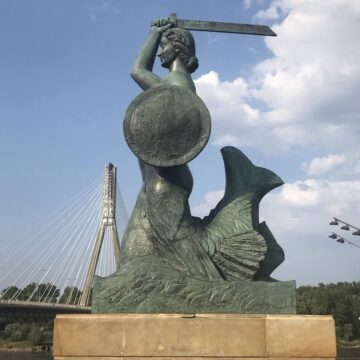A romantic story of two people brought together by a shared passion for cultural heritage. This article explores their efforts to preserve the fortified church of Apold, Transylvania and gives insights into marriage traditions within the Transylvanian Saxon community. The main theme of the article revolves around love and its various dimensions.
Category: WHEN
Annual Revival of the Teutonic Order at Grunwald
The modern phenomenon of historical re-enactments is finding more and more fans all over the world. Medieval re-enactments, which allow participants to "transport themselves" to distant times of knights, kings and court ladies, have played a special role here. An interesting example of this practice is the annual reconstruction of the 15th century Battle of Grunwald in Poland. For several days in August, the site is visited by crowds of people eager to watch the re-enactment of the famous armed clash between Teutonic and Polish-Lithuanian armies and eager to take part in the accompanying attractions. Let's go too, to see how historical heritage is interpreted by contemporary re-enactors.
Narrowboats and the Intricate Engineering of Foxton Locks
Ever wondered about the size of narrowboats? I visited Foxton Locks near Market Harborough in Leicestershire, and it's very interesting to watch boats going up and down, lock after lock. We see how the boat fits just right in the lock.
A Great Challenge for a Humble Museum
The great discoveries from the ancient culture of Tartessos at the archaeological site Casas del Turuñuelo will be exhibited in the Archaeological Museum of Badajoz. A humble museum since its beginnings, it now looks like it will become a place of great relevance after these important discoveries. But maybe it is a good time to think: is the museum ready for this? How will the new artefacts change the perception of the permanent collections? What impact will this have on the provincial museum?
Leipzig Cotton Spinning Mill and the Plant Roof Technique
Accompany authors Asem and Rachel to discover the story of Spinnerei, a large brick building in Leipzig that used to be a cotton mills at the end of the 19th century, which is one of the few still standing, despite the fact that much of Leipzig was bombed during the Second World War.
How is it that this building was spared from the bombs? There are a number of hypotheses, one of which is that the green roof protected it…
Istanbul Mosques by Christian Architects
This article discusses three late Ottoman-era mosques in Istanbul designed by Christian architects.
A Small Church Adorned with Frescoes Hidden Beneath Fig Trees on a Lonely Island in Albania
The rock where the Saint Mary church is situated is at a distance of some 150 metres from the Great Prespa lake in Albania. The church sits in the southeastern cave or, viewed from the direction of the lake, on the viewer's right-hand side, above the water level. This small church, hidden beneath fig trees on an island off Maligrad is notable for its 14th-century frescoes, which used to completely adorn both interior and exterior walls. It is believed that Serbian nobleman Kesar Novak, who held the region of Lake Prespa during the Serbian Empire of Uroš the Weak (1355-1371), built the church.
Did the Mermaid Swim to Warsaw Along the Vistula River?
In this article, Karolina invites you to take a walk through the streets of Warsaw in search of the Mermaids - a symbol that on the surface has nothing to do with the Polish capital but is in fact inextricably linked to it.
The Leipzig’s Music Trail – An Unexpected Discovery
Join the authors Nina and Hend as they take you on a walk through Leipzig’s Music Trail, where various buildings, streets, memorials, and monuments reveal the musical history of Saxony's largest city.
Reuse is the New Black
In this article, we explored how the concept of reuse and revitalisation translates into practice through the example of Schwemme Brewery. Since coming under the ownership of Schwemme e.V., this over 300-year-old brewery in Halle has been gradually transforming into a welcoming cultural space full of possibilities where dedicated individuals and an engaged community are using sustainable principles to ensure the meaningful transformation of historical space fit for modern needs.









